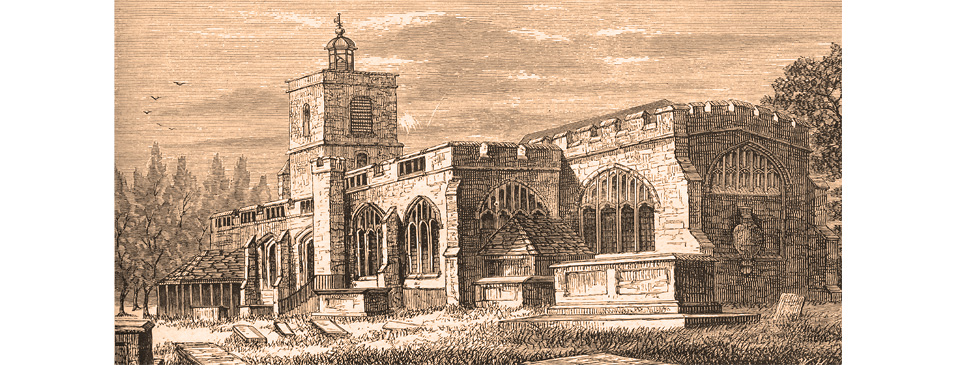The early history of East London

St. Dunstan and All Saints, the parish church of Stepney, dates back to Saxon times and is dedicated to Dunstan, Lord of the Manor of Stepney, who was canonised in the 11th century. It was rebuilt in the 14th century but the present building is largely from the 15th century.
Being largely rural, yet within walking distance of the City, Stepney was somewhere for ordinary Londoners to visit for the fresh air, or where wealthy Londoners kept a country house. During the Middle Ages the favourite sites for country houses were at Mile End Green (Stepney Green) and Bethnal Green. The aforementioned Henry de Waleys, the Gasgon wine merchant, Mayor of London and confidant of Edward I, had his house at Mile End Green where the King frequently visited him.
St. Dunstan’s church was already several centuries old when the parochial boundaries of Stepney were fixed. It served an extremely large area of nearly seven square miles, which was very inconvenient for parishioners in the more distant parts. The solution was to create chapels of ease, served by curates appointed by the rector of St. Dunstan’s. The chapel of St. Mary Matfelon was built beside Mile End Road, just a short distance east of Aldgate. It became known as the ‘white chapel’ and the first section of the road became Whitechapel Road, continuing north-east thereafter as Mile End Road. In 1338 St. Mary Matfelon was constituted as a parish church in its own right and the surrounding area of 211 acres became separate from the parish of Stepney. The building was badly damaged in a storm in 1362 and the church rebuilt.
St. Mary Matfelon stood on the Mile End Road at the western side of the parish. Further along the same road, at the far eastern edge of the parish, the chapel of ease of St. Mary, Stratford-atte-Bow was built in around 1311. It was (and remains) on an island in the middle of the street, which would have been quite a commanding position in its early days. Its creation was to save local inhabitants having to make the long journey to Stepney church when roads were flooded in winter.
The rebuilding of St. Dunstan’s and the establishment of its two chapels of ease at Whitechapel and Bow in the early 14th century probably reflected an increase in the local population, which came to an end with the Black Death. No other chapels were built in Stepney during the following three centuries.
The Black Death plague had a dramatic effect on Stepney. The first mortalities were in December 1348 when a mother, daughter and two sons died. The following year the deaths occurred of four more members of the same family. At least 121 died in Stepney that year. They were buried in a plague pit at East Smithfield on which a Cistercian monastery was afterwards founded by Edward III. Many plots of land became vacant because of the lack of heirs. Despite the large number of deaths, the population of Stepney is estimated at around 1,500 in 1377 according to poll-tax receipts, having doubled since the end of the 11th century.
Throughout the Middle Ages the area to the east of London remained as pleasant and rural countryside. The Tudor historian John Stow recalled how the people of London would every May Day in the past walk to the “sweet meadows and green woods [of Bethnal Green], there to rejoice their spirits with the beauty and savour of sweet flowers, and with the harmony of birds.”
Sources include: Sir Hubert Llewellyn Smith ‘The History of East London’; John Marriott ‘Beyond the Tower’; Walter Besant ‘East London’ (1903); Derek Morris ‘Whitechapel 1600-1800’; Millicent Rose ‘The East End of London’ (1951); Derek Morris & Ken Cozens ‘London’s Sailortown 1600-1800’; Dan Cruickshank ‘Spitalfields’. Thanks also to Olwen Maynard.


